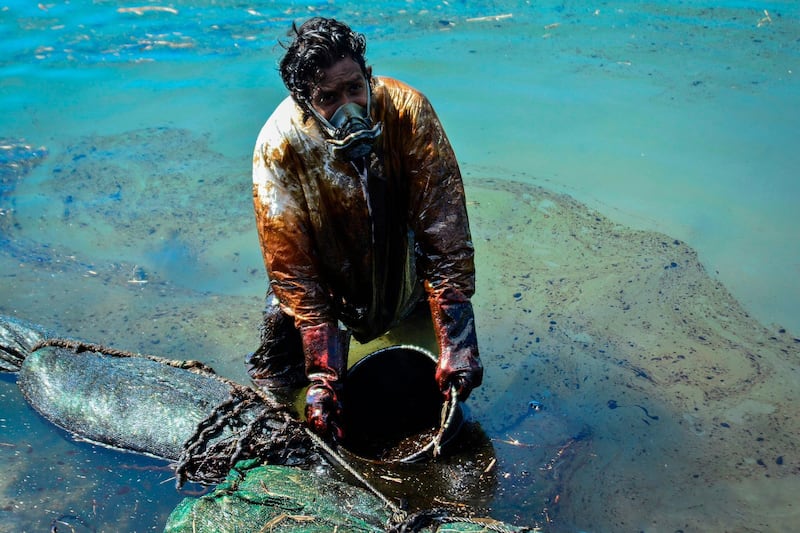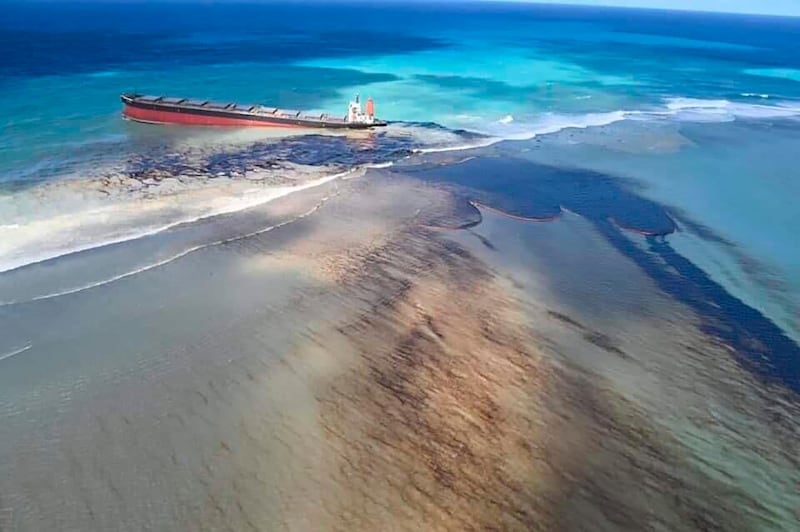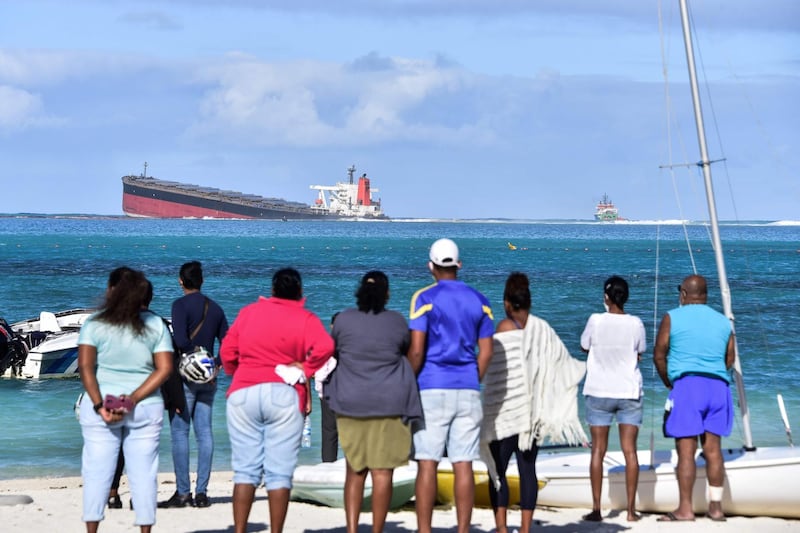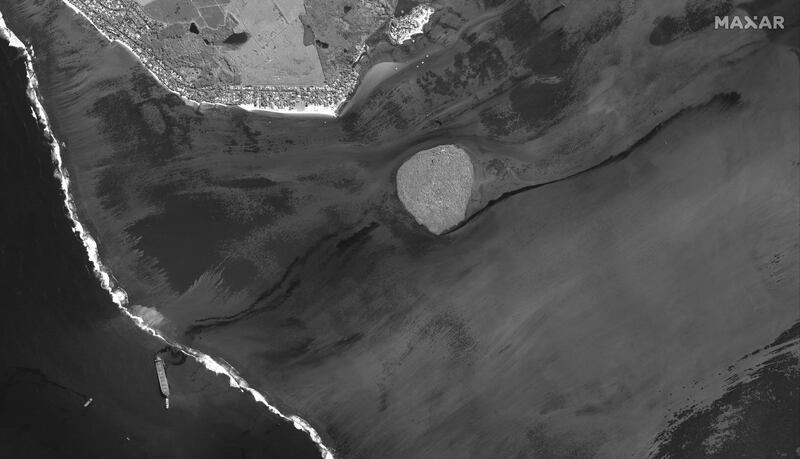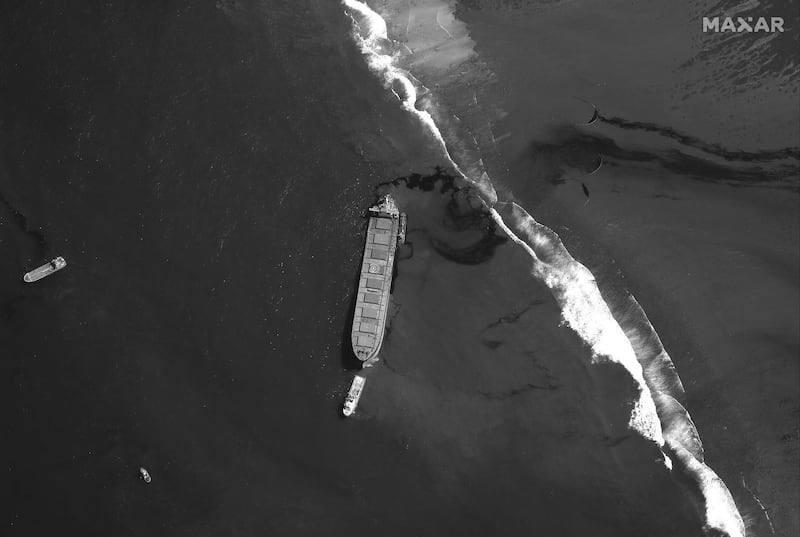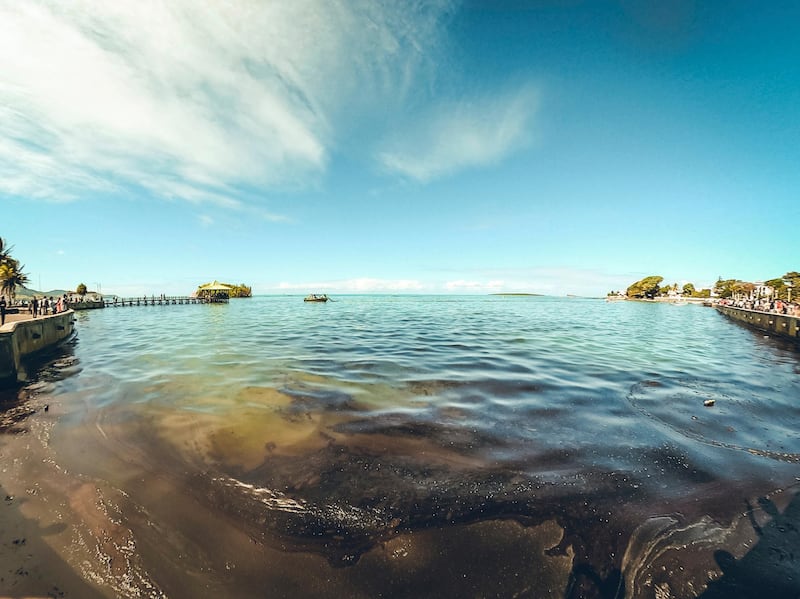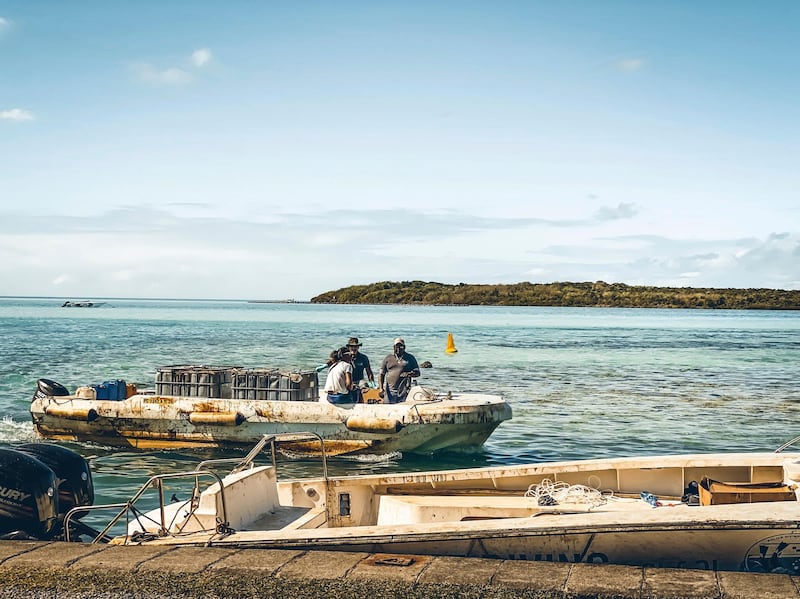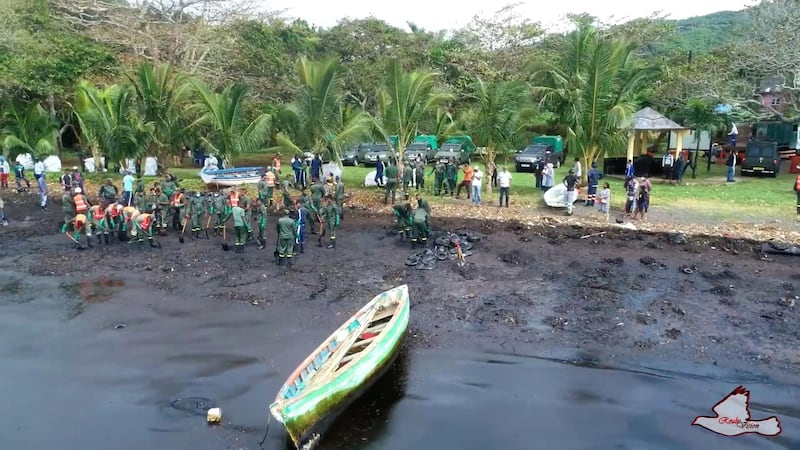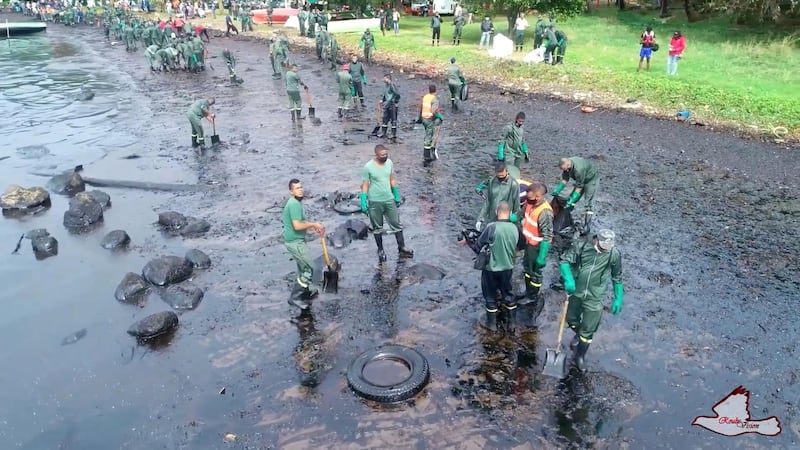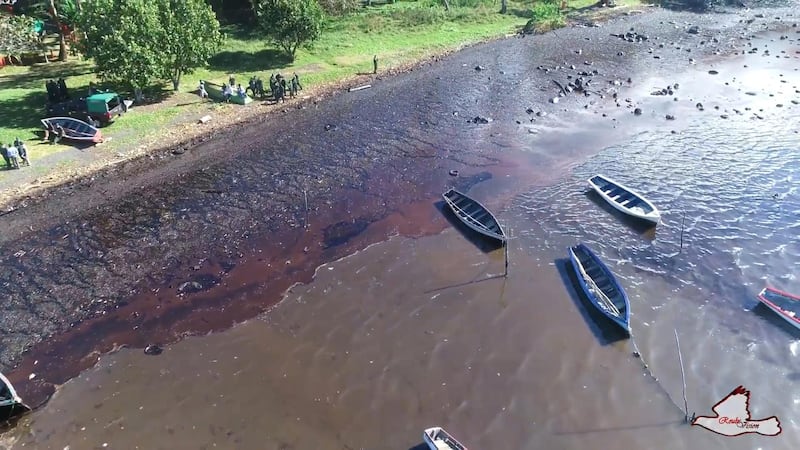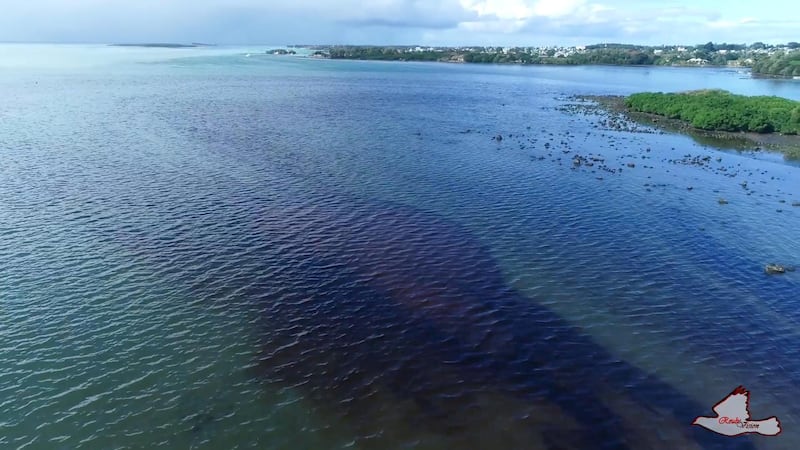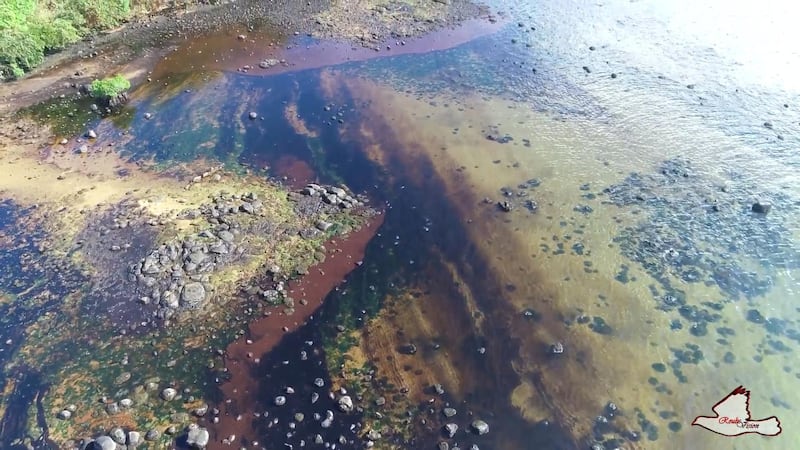At first glance, it is hard to imagine that the white sands and radiant blue sea near the village of Pointe d’Esny in Mauritius was the site of an environmental catastrophe.
There are fewer people on the shores because of the unusually cool winter and Covid-19 restrictions.
The sound of the waves sweeping up on to the sand still calms the soul.
But only a year ago, the sea here was black and the waves brought sorrow, anger and desperation.
On July 25, a Japanese-owned, Panamanian-flagged 300-metre long bulk carrier crashed into coral reefs mere kilometres from Pointe d’Esny, a village on the south-east coast.
Less than two weeks later, the MV Wakashio spilt 1,000 tonnes of oil into this pristine lagoon. Mauritius declared a “state of environmental emergency”.
The oil spill triggered one of the largest citizen mobilisations in Mauritius’s history.
People from all over the country helped build makeshift booms to slow the oil’s spread, and joined clean-up groups.
Within a month, about 2,000 tonnes of oil mixed with sea water or sand and soil had been carted away.
Conservationists, meanwhile, rushed to rescue some of the country’s, and the world’s, most endangered animals.
Nature defies the oil slick
A year later, the initial signs are that this mammoth show of solidarity may have prevented some of the worst immediate effects of the oil spill.
Just three months after the spill, a spectacular mass spawning of corals occurred.
Once a year, at full moon, the sea turns into a glittering canvas of eggs and sperm, released by corals, in one of nature’s incredible underwater shows.
This is the time when coral fertilisation happens and new corals are born. The mass spawning happened right on cue at the end of October, seemingly unperturbed by the oil spill.
“Mass spawning happened correctly and as expected, and I anticipate the same later this year,” said Dr Pramod Kumar Chumun, an environmental scientist at Eco-Sud, a local nongovernment conservation organisation.
The oil spill did not just affect the sea. Within hours of the spill, Ile aux Aigrettes, a coraline islet, had been surrounded by oil.
The islet is a nature reserve, home to some of the world’s most endangered birds.
Fearing that the spill could lead to a collapse of avian populations, conservationists battled oil fumes to evacuate nearly two dozen birds.
Mauritius olive white-eyes were among them, a small olive-grey bird recognisable by white rims around their eyes.
Only 73 of them were in the wild on Ile aux Aigrettes before the rescue operation.
To the delight of conservationists, those left on the islet were not visibility affected by the oil spill after all. Less than two months later, the rescued birds were released back on Ile aux Aigrettes.
Drone footage shows extent of Mauritius oil spill
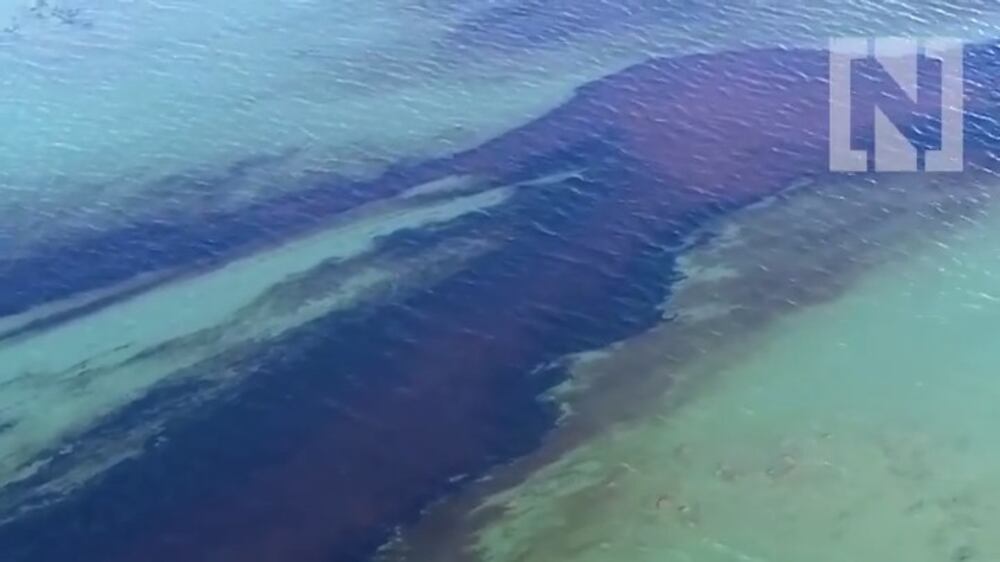
While conservationists were relieved that the immediate effect on the birds appeared to be minimal, they feared the worst for a recently identified endemic cricket.
The cricket, possibly one of the rarest in the world, is found only on the Ile aux Aigrettes coast. But once oil washed over the vegetation there, they seemed to disappear – thankfully, not for ever.
“We found the crickets again in February,” said Dr Vikash Tatayah, conservation director at the Mauritian Wildlife Foundation, an independent NGO.
“We’ll do a survey of their population soon to see how their numbers compare to before the spill.”
Despite those initial positive signs, things are certainly not back to normal. Some oil is still trapped in mangroves or embedded in the sea bed.
Fishermen reported seeing traces of oil when they dislodged oysters and shellfish as late as March this year.
Scientific studies from past oil spills show that oil compounds tend to accumulate more in shellfish and to a lesser extent in the muscles of fish.
But to many people from local communities of the region, this is irrelevant: consuming their catch is a matter of survival.
The livelihoods of those communities have been hit hard by the Covid-19 pandemic. Mauritius’s turquoise lagoons and sandy beaches welcome more than a million tourists every year. But as the country effectively closed its borders because of the pandemic, incomes have plummeted sharply.
The oil spill has only compounded the distress.
“As tourism was impacted, many people in the south-east turned to the sea to make ends meet. They couldn’t do so when the oil spill happened,” said Josheena Naggea, a Mauritian PhD candidate at Stanford University, who has been interviewing people in the region.
But perhaps there are brighter days ahead.
Mauritius is gradually reopening its borders and will be open to vaccinated tourists from October. Projects and other endeavours to support the local community are being funded in part by the money raised from the Mauritian public during the oil spill. For example, local inhabitants can now earn stipends as they retrain to become eco-guides.
It is still too early to say what the long-term effects of the oil spill will be on the south-east coast of Mauritius and its inhabitants.
But if the past year is anything to go by, there is at least hope that things will get better.
